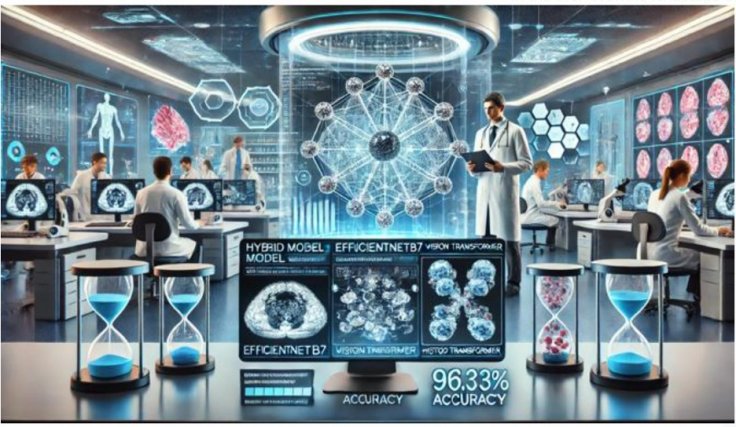
In the ever-evolving landscape of medical diagnostics, one researcher stands at the forefront of innovation, pushing the boundaries of what's possible in breast cancer detection. Subrahmanyasarma Chitta, a distinguished software engineer and AI researcher, has developed a groundbreaking hybrid deep learning model that promises to transform the field of histopathological image analysis.
Chitta's latest research, titled "Advancing Histopathological Image Analysis: A Combined EfficientNetB7 and ViT-S16 Model for Precise Breast Cancer Detection," represents a significant leap forward in the application of artificial intelligence to medical diagnostics. This innovative approach combines two powerful deep learning architectures - EfficientNetB7 and Vision Transformer (ViT-S16) - to create a hybrid model that outperforms existing methods in breast cancer detection accuracy.
The importance of this research cannot be overstated. Histological diagnosis remains the gold standard for cancer detection, but it is a time-consuming process prone to human error and subjectivity. Chitta's model addresses these challenges head-on, offering a solution that is both faster and more accurate than traditional methods.
What sets Chitta's work apart is its remarkable performance. When tested on the Breast Cancer Histopathological Image (BreakHis) dataset, the hybrid model achieved an impressive accuracy of 96.83%. This level of precision is not just a marginal improvement; it represents a significant advancement that could have far-reaching implications for patient care and outcomes.
The model's high precision (96.5%), recall (96.7%), and F1-score (96.6%) demonstrate its reliability across different performance metrics. Perhaps most impressively, the Area Under the Curve (AUC) score of 0.984 indicates the model's exceptional ability to distinguish between benign and malignant tumor samples - a critical factor in cancer diagnosis.
Chitta's research is not just about numbers and algorithms; it's about transforming lives. By developing a tool that can support pathologists in their work, this innovation has the potential to speed up diagnosis times, reduce human error, and ultimately improve patient outcomes. In a field where early detection can mean the difference between life and death, the impact of such advancements cannot be overstated.
The healthcare community has taken notice of Chitta's contributions. His work is gaining national and international acclaim, with experts recognizing the potential of this hybrid model to revolutionize breast cancer detection. As one of the small percentage of researchers whose work is instrumental in shaping healthcare, Chitta is paving the way for a future where AI and human expertise work hand in hand to provide the best possible care for patients.
What makes Chitta's approach particularly innovative is its integration of two different AI architectures. The EfficientNetB7 component excels at extracting local features from images, while the ViT-S16 provides a global contextual analysis. By combining these strengths, the hybrid model achieves a level of comprehension and accuracy that surpasses what either model could achieve independently.
The implications of this research extend far beyond breast cancer. The principles and methodologies developed by Chitta could potentially be applied to other forms of cancer detection, and even to different areas of medical imaging. This versatility underscores the transformative nature of his work and its potential to drive further innovations in healthcare diagnostics.
As we look to the future, it's clear that more research in this field is not just important - it's essential. Chitta's work serves as a foundation upon which other researchers can build, pushing the boundaries of what's possible in AI-assisted medical diagnostics. The potential for improving patient outcomes, reducing healthcare costs, and alleviating the burden on medical professionals is immense.
In conclusion, Subrahmanyasarma Chitta's research represents a significant milestone in the intersection of artificial intelligence and healthcare. His hybrid deep learning model for breast cancer detection is not just an incremental improvement; it's a transformative approach that could reshape how we approach cancer diagnosis. As we continue to navigate the complexities of healthcare in the 21st century, innovations like Chitta's remind us of the power of technology to make a real difference in people's lives. The future of healthcare is here, and it's being shaped by visionaries like Chitta who dare to push the boundaries of what's possible.









